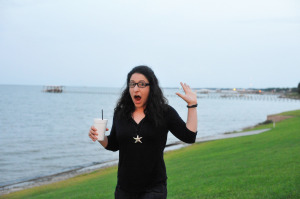by Sam Tackeff | Nov 6, 2013 | Condiments, Eggs, Ingredients, Uncategorized
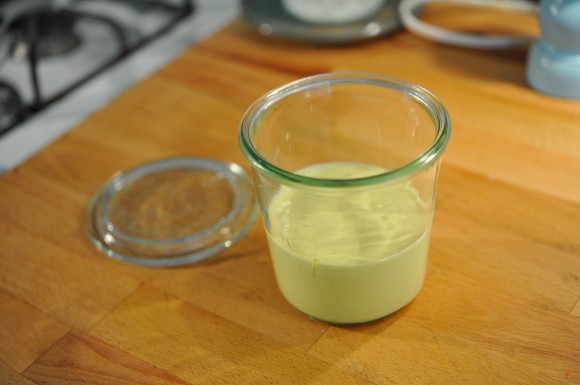
A friend in the gym today mentioned that her mayonnaise was breaking, and I felt for her. Truly, there’s nothing like a sauce that refuses to do what you want it to – which is almost always emulsify. I suspected that the Vitamix was the culprit here, so I mentioned my tried and true mayonnaise tool: the whir-whir! (That’s how I refer to my immersion blender. I’m fun like that.)
Here’s my usual recipe. It’s based on a dozen or more ideas for mayo that I’ve read here and there: Alice Waters, Tamar Adler, even J.Kenji Lopez-Alt, Patience Grey… everyone has a basic recipe. It’s a little un-traditional with that whole egg (read: lazy.)
Mayonnaise: It’s Easier Than You Think
When you go to your fridge and you are out of Mayonnaise, fret not. Take the little cup that comes with the immersion blender. Into it, crack a whole egg, preferably very fresh and from a reputable source, and at room temperature (having the oil and the egg at the same temperature helps promote emulsion). You aren’t cooking the egg, and a farm egg tastes so much better. Add a large spoonful of Dijon, a teaspoonful of vinegar, and lemon juice – about a half lemon’s worth. I always like Sherry vinegar, but you could use cider vinegar here, or rice wine vinegar, or maybe red wine vinegar. You could be minimal here – just the mustard and lemon juice, but I like the mix of acidity. And then you pour in your oil – between 3/4 and a cup. I try to use a fairly neutral oil. You could use half olive oil if you’d like, but full olive oil tastes incredibly olive-y and limits what you can actually do with this stuff. Here is the fun part. Stick the immersion blender in and whirr. Within about 20 seconds your mayo will come together. Usually I have to stir a little bit to get it going, but I’ll just blitz until I get to a good consistency, which for me, is slightly less firm than the store-bought stuff.
Optional twists: you could add a few cloves of finely minced or crushed garlic in here and it becomes an “aioli” of sorts. Or, you could add a handful of fresh herbs, or any variety of spice to taste.
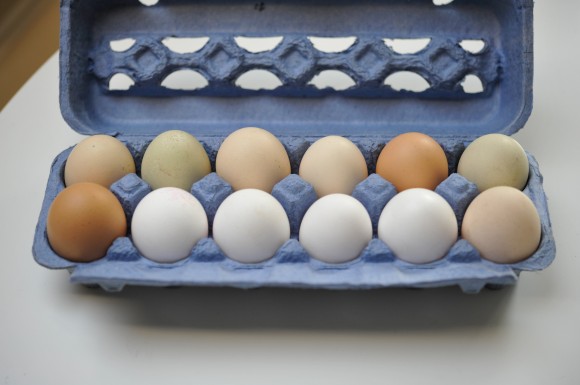
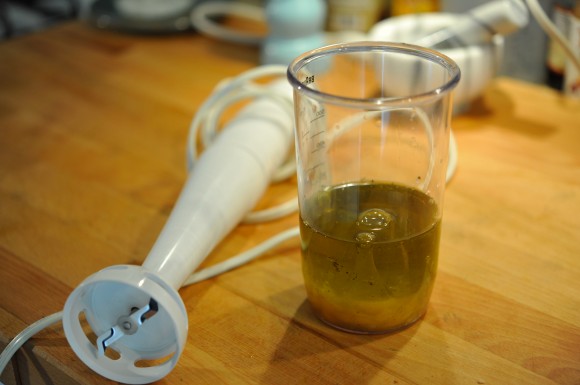
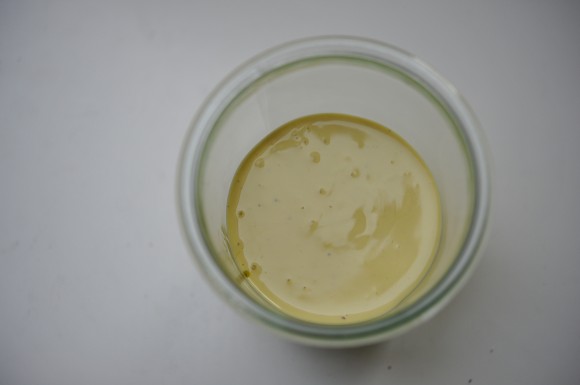
Now that you have this stuff on your hands, here are some ideas of what to do with it:
1. Slather it on sandwiches.
2. Put a little dollop on top of eggs.
3. Serve with boiled or braised meats.
4. Place a generous spoonful on a bowl of cooked vegetables.
5. Make a raw vegetable salad with it. I like this recipe for “Coronation Cauliflower“, a raw cauliflower salad.
6. Make some home made coleslaw.
7. Slather it on grilled chicken.
8. Make seafood salad with crab, avocado, and a squeeze of lemon.
Or eat with a spoon, by itself, every time you open the fridge. Don’t be ashamed.
by Sam Tackeff | Nov 5, 2013 | Blogging, Challenge, Vegetables
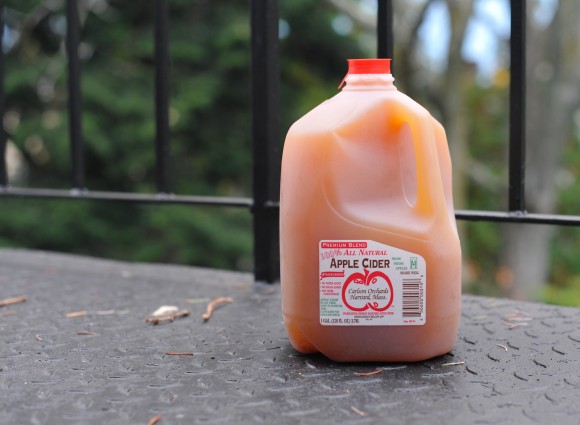
Fall foods. I decided today that I needed to write a list of fall foods so I wouldn’t miss them. Because it seems like we’re on the cusp of winter already, and I haven’t had my fill of cider donuts and delicate and baked apples. Usually I think of seasonal foods too late, and then I become bitter and cranky. And nobody likes that.
Speaking of bitter and cranky, first, a complaint. The Pumpkin Spice Latte. The pumpkin spice donut. The pumpkin spice pretzel. The pumpkin spice soap. The pumpkin spice dishwashing detergent. (Just kidding, that doesn’t exist…. I hope.) So yes, I just don’t understand it. Peppermint mocha? Okay, I get those. I like the idea of spiced drinks and nostalgia, and feeling homey, but the majority of the PSL’s I’ve tried – not purchased, but obligingly sipped from those who say imploringly “I swear you’ll love it, just try it one more time!” – have been cloyingly sweet, almost metallic tasting. Not to mention the whole zero-pumpkin thing for most of these drinks. The pumpkin spice latte just isn’t for me. But what about warming beverages? I’ll take coffee, tea, chai, or even cider spiked with spiced rum. It’s a thing I “invented” on Thanksgiving one year at the open bar. Yep, that’s a drink I can be on board with.
I’ve been trying to get my fill of fall foods that come (mostly) from nature. Here are some of my favorites:
1. Delicata squash, reigning supreme varietal of squash. I like mine sliced, tossed in coconut oil, with chile, cumin, and salt. Sometimes I add sweeter warming spices, like cinnamon, mace, and clove. Roast, roast, roast.
2. The other squashes: butternut squash, acorn squash, spaghetti squash. Okay, these squashes, well, they just aren’t delicata. I still like ‘em anyway.
3. Apples. I didn’t go apple picking this year. I know there is still time, but I’m not sold on having bags and bags in my fridge taken up by one type of food. That said, I did go through about a dozen varietals from Volante Farms, and managed to sample another dozen more. I like them fresh, in salads, and baked – stuffed with walnuts and dark chocolate, and doused out of the oven with a hint of cream.
4. Boiled cider. Here’s how you make it – take fresh cider (not the boozy kind), and simmer down as long as you can, until reduced by half, or if you can wait long enough, by 3/4. This took me a little under an hour for a half gallon. Take resulting cider, and spoon over apple cake, vanilla ice cream, granola, oatmeal, yogurt, and more. When you are sick of it with sweet things, use some to marinate and bake a pork tenderloin.
5. Apple cider donuts. My longstanding favorite have been from Applecrest farm in Rye, warm.
6. Chili. I’ve been waiting all summer long to have my chili back – it’s not that I don’t like eating it in the summer time, it just didn’t feel right to cook something low and slow in my own house until the temperature dropped below 65.
7. Parsnip Fries. Parsnips in general. Sure they look like white carrots, but they don’t taste like carrots at all!
8. Pumpkin whoopee pies. The winning whoopee this season has come from Volante Farms in Needham. Preferably cream cheese frosting.
9. Turkish pumpkin dessert. Pumpkin braised in a simple syrup with coconut and nuts. I haven’t made it this year, but when I do, I’ll post the recipe.
10. Persimmons. Oh, how I miss these in San Francisco, where you could find them ripe, and they didn’t cost $3 a fruit. (It’s true you can get them for cheaper on the East Coast, just never ripe.)
11. Pumpkin chocolate chip bundt. This recipe. My absolute favorite fall food. Tastes good warmed for breakfast. Tastes great at the end of a long hike.
Of course there are many more – cranberries, cabbage, every type of braise. I’ll have to keep on thinking, and get started on the eating!
by Sam Tackeff | Nov 4, 2013 | Art
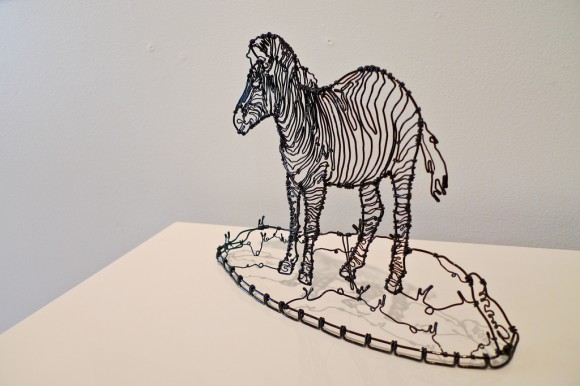
This zebra has nothing to do with Netflix. When you take thousands of photos a year, and you publish significantly fewer than you take, you are bound to stumble across one here and there and think “Hey! I bet the internet would like to see a little wire statue of a zebra today!” So here one is! (The piece is from a show a few years back at Nahcotta, and I have no idea who the artist was. If anyone knows, I’ll update this!)
– –
When Netflix dropped a massive amount of titles a year or so ago with no fair warning, I was ready to break up with it had it not been a good source of guilty pleasure series and my favorite British crime dramas. Fortunately, the service has started to redeem itself for me lately – specifically with their additions of some new food related content. Last night we watched Sally Rowe’s documentary ‘A Matter of Taste’, following the career of the chef Paul Liebrandt. The film was both fascinating and depressing. Liebrandt, who achieved some notoriety in his very early 20’s (for good reason) and whose career started going downhill from there doesn’t seem to catch any breaks, and most of the film caused me significant pain like I was watching some sort of accident in slow-mo. It’s weird to think of what it takes to make a documentary that spans nearly a decade (or sometimes more in filming). What is that special something that the film maker sees that the rest of the world doesn’t know? How many crappy films are made over a decade where the protagonist just never does anything interesting?
We’ve just started with David Chang’s ‘The Mind of a Chef’, the PBS series where Chang goes around and eats stuff, meets chefs all over the world, talks science, and comes up with crazy shit, and it’s proving to be just as entertaining as I expected it to be. I think it was the first or second episode where he made gnocchi out of ramen noodles (the dried package kind), and I was hooked for life.
Here’s a few from my Netflix queue – mostly documentaries, and a few fictitious in the mix. I’ve linked to the Netflix instant viewing for your convenience:
Three Stars – “Focusing on nine Michelin-starred chefs from three continents, filmmaker Lutz Hachmeister reveals the real business of cooking on the highest level.”
The Raw and The Cooked – “This sumptuous doc explores Taiwan’s diverse culinary culture, drawn from both ethnic Chinese and myriad outside influences.”
Eat This New York – “The difficulties of two restaurant owners are highlighted by interviews with some of New York City’s most successful and famous restaurateurs.”
Haute Cuisine – “Based on real characters and lives, this food-rich drama recounts Hortense Laborie’s experiences as personal chef for the president of France.”
Sushi: The Global Catch – “This documentary traces the history of sushi from its origins as Japanese street food to its current status as an internationally popular cuisine.”
I Like Killing Flies – “Come peer into Shopsin’s, a hole-in-the-wall Greenwich Village restaurant that’s served comfort food to satisfied customers for more than 30 years.”
El Bulli: Cooking in Progress – “This appetizing documentary follows world-renowned chef Ferran Adrià as he plans and perfects a new menu from the privacy of his Barcelona lab.”
Step Up To the Plate – “Acclaimed French chef Michel Bras passes the torch (in this case his namesake restaurant) to his son Sébastien in this intimate documentary.”
Le Grand Chef 2: Kimchi Battle – “To settle a dispute about the origins of kimchi, the president of Korea sponsors a contest that attracts a pair of competitive step siblings.”
Le Cirque: A Table in Heaven – “Follow restaurateur Sirio Maccioni as he closes his celebrated Le Cirque restaurant, then works feverishly to relocate and reopen a year later.”
The Restauranteur: “In this foodie documentary, director Roger M. Sherman shadows restaurateur Danny Meyer in an attempt to find out what fuels his business cravings.”
Have you watched any of these? Any great food documentaries not on this list that I should be watching?
by Sam Tackeff | Nov 3, 2013 | Photography, Travel
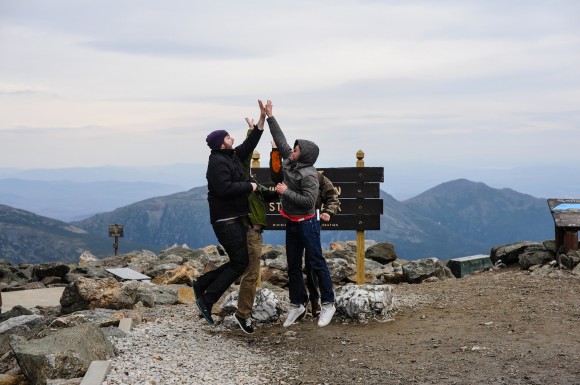
Here’s a photo essay of sorts – I’ve finally managed to organize and edit my photos from our trip to Mount Washington a few weeks back. Devon and his coworkers were on a random work assignment, and I was happy enough to tag along. It was the last weekend to drive up the Mount Washington Auto Road before it closed for the season, and even though I like to think of myself as an active and outdoorsy person, driving up Mount Washington seemed a lot more appealing than hiking it this time around. (To get to the summit you can hike, drive, or take the cog railway. For some reason, the idea of a train climbing up a mountain is even more terrifying that us driving it.) So what, exactly, does driving up the auto road entail? For about $27, and an additional $8 per extra passenger, you get admission to the auto road, a compact disc audio tour, and the infamous “This Car Climbed Mt. Washington” sticker. The drive to the summit is a twenty to thirty minute loop around the mountain. The road is narrow, there are no guard rails, and if you are nervous, I highly recommend that you don’t read Yelp reviews of the road before summiting. Of course I did, so I’ll share my favorite two here:
“Unless you like scuba diving to see great white sharks or bull fighting or have nerves of steel, trust me this is to be avoided at all costs!! This is a white knuckle ride to put it mildly!!”
“I’m not afraid of heights, but I am afraid of plummeting 7 miles to the earth below.”
Despite the warnings, the drive is actually quite safe. Best explained in the auto road website FAQ: “Be honest, how many people have died riding on the Auto Road? Over 150 years, there have been three fatalities on the Auto Road. In 1880, a stage overturned (in the hands of a drunk driver), and a passenger was killed. In 1984, a vehicle experienced brake failure about a mile up the road and was unable to make it down safely. Most recently, a motorcyclist suffered a fatal crash in 2009.”
So up we drove, through the auburn foliage, up past the tree line to the lunar-like tundra zone, and finally up to the icy cold summit. At the top, we got to say hello to the scientists working in the Mt. Washington Observatory, and say hi to Marty, who, I could have sworn was an animatronic cat, despite assurances from several people that he is in fact, alive.

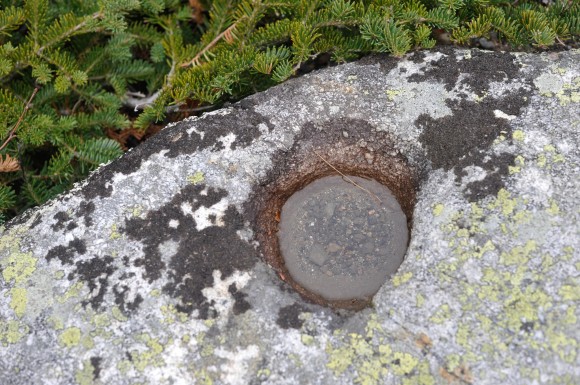

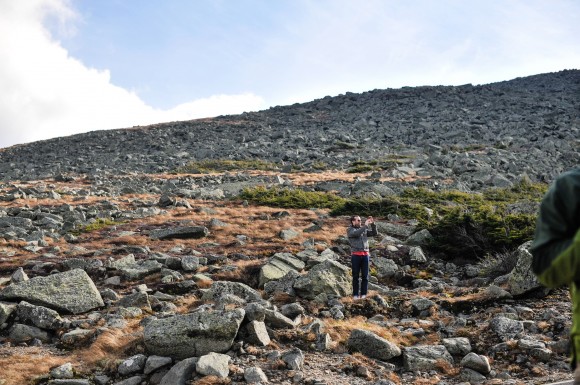
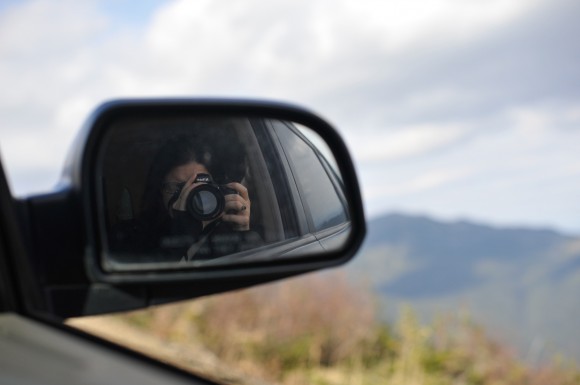
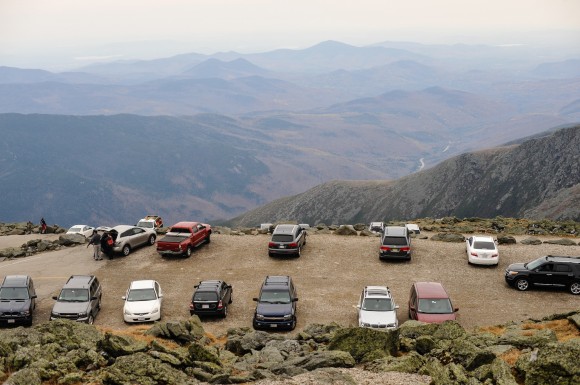
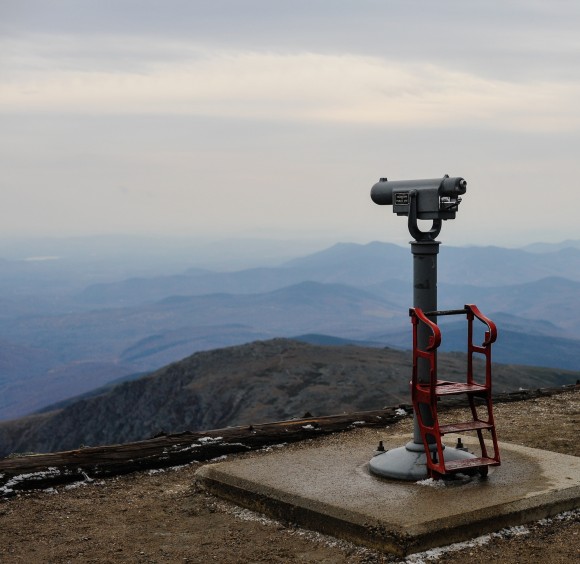
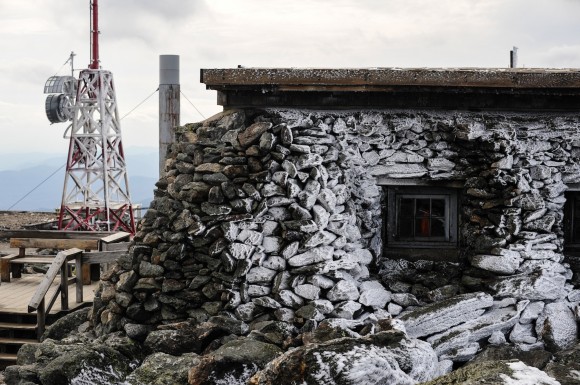
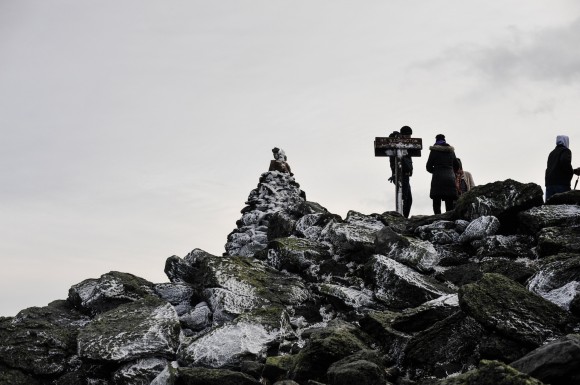



While the drive up was fine, the drive down was slightly more disconcerting, and I spent much of it trying to avoid looking out of the window or nervously fidgeting.
This is what happens when you neglect the advice to shift into a lower gear and use the turnouts several times on the way down and not ride your brakes. (My assumption – that isn’t actually our car.)

The rest of the weekend was spent lounging around North Conway. I stopped multiple times at my favorite North Conway coffee shop Frontside Grind. I had my regular cortado (very good), and the Fog Lifter (espresso in coffee), and sadly forgot to refill my cold brew growler, which was forgotten not once, but twice in the car. We acquired lobsters at Hannaford (for 5.99/pound, you pick a live lobster and they’ll boil it for you in minutes), and got real fancy with lobster mac & cheese, and enough Trader Joe’s appetizers for eight people.
We watched hours of movies, ranging from great to terrible – starting with Toy Story 2, then Spaced Invaders, then The Ruins, which only served to make me feel terrible for both Jena Malone and Jonathan Tucker. Before heading back to reality, we took a drive up Cathedral Ledge, and reveled in the fall foliage. New Hampshire is a truly special place to be this time of year.
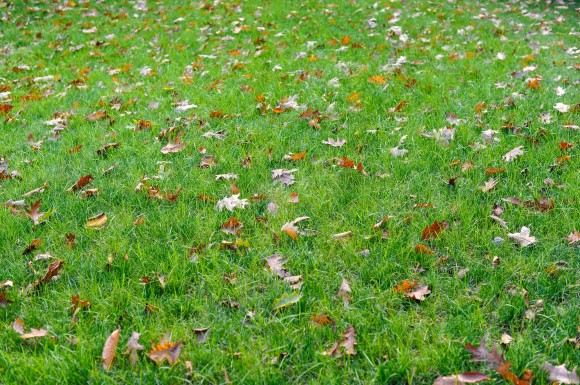

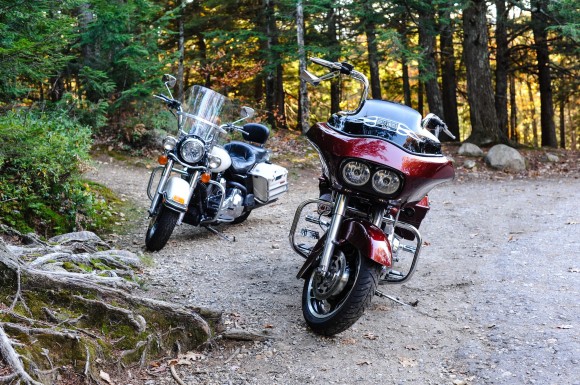
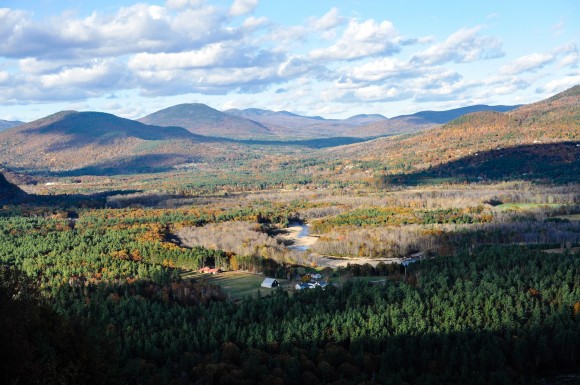
And because we are friends, here’s one last gem from the camera roll – in which I follow through with my resolution to spend more time in front of the camera. Vogue, my dears, vogue.

by Sam Tackeff | Nov 2, 2013 | Books

First, here’s dinner tonight. I heated up my cast iron pan with a glug of olive oil and a spoonful of butter. I seasoned some large sea scallops with salt, and pan seared them in the pan, just a few minutes on each side. In a large bowl, I made the salad – baby spinach, an avocado, and a ripe mango. When the scallops were finished, I took them out of the pan, and added a single clove of minced garlic to the pan juices. I cooked the garlic for about 30 seconds, and transferred the juices, oil and butter to a bowl, and added the juice of a lime. I poured in a bit more olive oil and whisked it all together, making this one delicious pan-sauce vinaigrette. The scallops went on the salad, I dressed everything, and tossed gently. Dinner!
– –
You know how people look back fifty, sixty, seventy years and think “Ahhh, the good old days…now that was the life!” And then smart people realize that that life was fairly terrible back then, and societal norms were actually restricting and oppressive?
Yes, okay.
I was going to make that a metaphor for my reading habits – how years ago I used to read voraciously, except that most of the time I was reading kind of crappy novels, and so my 100+ books a year didn’t actually mean all that much because of a lack of quality reading material. Except, that’s actually a terrible metaphor, because I was reading 100+ books a year, and not wasting the rest of my time with bad habits, so even though those books weren’t all Nabokov, the fact that I was reading more often… well, that made my life better in general.
Right. Books. Let’s talk about them then. For the past two weeks I’ve been trying out a new app called Oyster – which touts itself as the “Netflix for Books” – a reading app for iPhone.

Well, I already use what I’ve thought of as the Netflix for books, which is my multiple public library accounts, which allow me to download hundreds of thousands of e-books and audiobooks on my phone through Overdrive. For free.
But the fact is, Oyster is very pretty, and Overdrive, not so much, so I thought that for the $9.95/month that Oyster is charging it couldn’t hurt try out the service for a bit and see how I liked it. While I’m never going to give up the delights of print, a proper reading experience on the phone is important to me, as I typically always have the device on me, and count on a digital library to entertain me when I can’t have a book in hand.
Set up is fairly easy – download the app – still, I believe, in locked beta – request an invite, get the invite two days later, and then boom, access. They make you choose five books that you’d like to start with – mostly I believe to get you to search through their content, and I couldn’t quite figure out how to bypass this step and start reading.
While there aren’t necessarily NYTimes top best sellers, Oyster has a good selection of literature, non-fiction, and much to my enjoyment, cookbooks! (I actually have this Adam Roberts cookbook, but it’s always nice to be able to pull up a cookbook on your phone while out and about.)
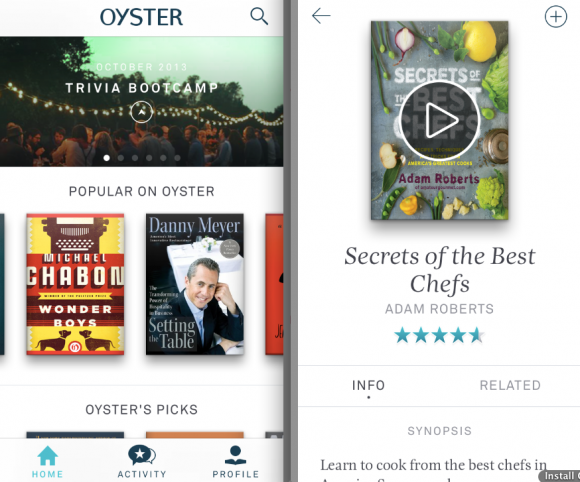
This month on Oyster I’ve read: The Art Forger, by B.A. Shapiro, about art heists, forgery, and the Isabella Stewart Gardner museum (my favorite museum). And then I read Scott Jurek’s Eat and Run, about his career as an ultra marathoner. I’m almost finished with the Runner’s World “Running on Air” by Budd Coates, a whole book about breathing, which might sound bizarre, but actually I found to be fairly useful.
Now I’m reading Onward, by Howard Schultz about how he re-vitalized Starbucks. I find the book interesting, if somewhat self serving, but I’m only a quarter of the way through.
My main complaints about Oyster are that the books you are reading aren’t all downloaded on your phone, so if you are in a non-service area, or if, say, you are in the middle of your office with low service and your office wi-fi happens to be down, you are not guaranteed to be able to pull up a book to entertain yourself. This certainly saves space on your phone, but limits the usefulness of the app. (Oyster says in the FAQ that they download the last 10 books read onto the phone, but I’ve not been able to pull up books a few times now in this situation. It’s possible that this is a bug in the app, so I’d like to see if this fixes itself in newer builds – additionally they mention the possibility of high data costs of roaming while reading Oyster books abroad, so this makes me curious about how the books are actually being served to the phone vs. being stored.)
At the moment, there is also a limited selection – 100,000 titles, and not all of them full books, although, for $9.95/month, I decided that as long as there are 2-3 books that I want to read per month, it’s a fairly decent value. I suspect that they’ll be getting more additions soon.
The third frustration, and perhaps the most problematic: the cataloguing and search is terrible. This might be by design, but there are limited ways to search, and it’s very hard to search by specific topic. The search bar seems to have a weak algorithm. I’d love to see the ability to search by publisher, and be able to drill down by topic better – or to see most requested books in each category. I like the idea that each book has a “related” feature, but in reality this feature isn’t all that useful.

For instance, in the screenshot above, you’ll notice a section “Similar to Onward” (the book about the business of Starbucks that I’m currently reading.) While the idea of a “similar to” feature is neat, in practice, you’ll note that two of the books “Fresh Pantry Rhubarb” and “Fresh Pantry Lettuce” aren’t all that similar at all. (Unless there’s a plot twist that I’m not seeing coming – maybe Howard will quit his coffee empire and become a hipster farmer?)
The keyword search feature is similarly frustrating – I expect to be able to search for two word keywords, but when I searched “food memoirs” and “food literature”, this is what I got – despite the fact that there are actually quite a decent amount of both types of books in their selection – you just have to dig and dig for them. It’s sort of a trial and error – to find books, I’ve been clicking the related button many times, and trying to go farther and farther down the wormhole in order to find interesting titles.
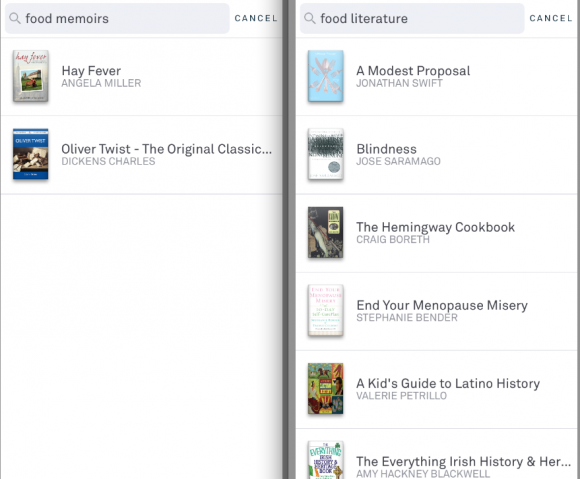
If Oyster can improve these three key issues, then I think they’ll have the edge on other reading apps. That said, until I run out of books to read, I’ll be a decently happy paying customer – and hopefully they’ll continue to improve!
Next up on my Oyster reading list: Bill Bryson’s ‘The World at Stage’, Lawrence Durrell’s ‘Spirit of Place’, ‘Zen and the Art of Motorcycle Maintenance’, ‘The Widow Cliquot’, Clifford Wright’s ‘Mediterranean Vegetables’ (a cookbook), Steven Sieden’s ‘A Fuller View’ (about Buckminster Fuller), Annie Dillard’s ‘The Writing Life‘, and ‘If on a winter’s night a traveler’ by Italo Calvino. Admittedly, because if there is one feature I love best it is the list making feature, there’s quite a few others that I have added.
What’s on your reading list? Have you tried Oyster?































